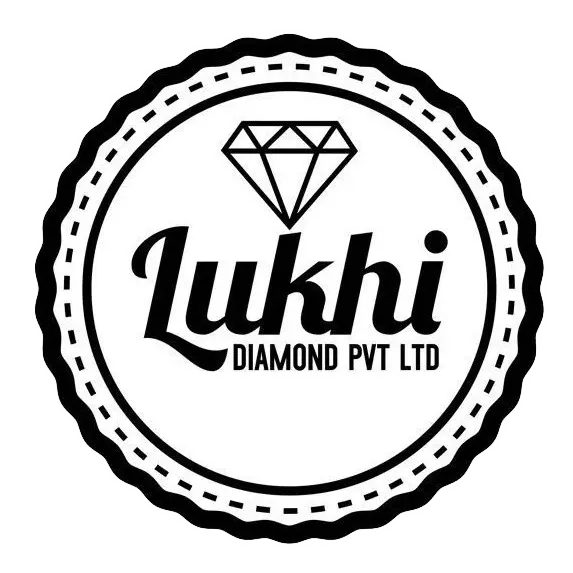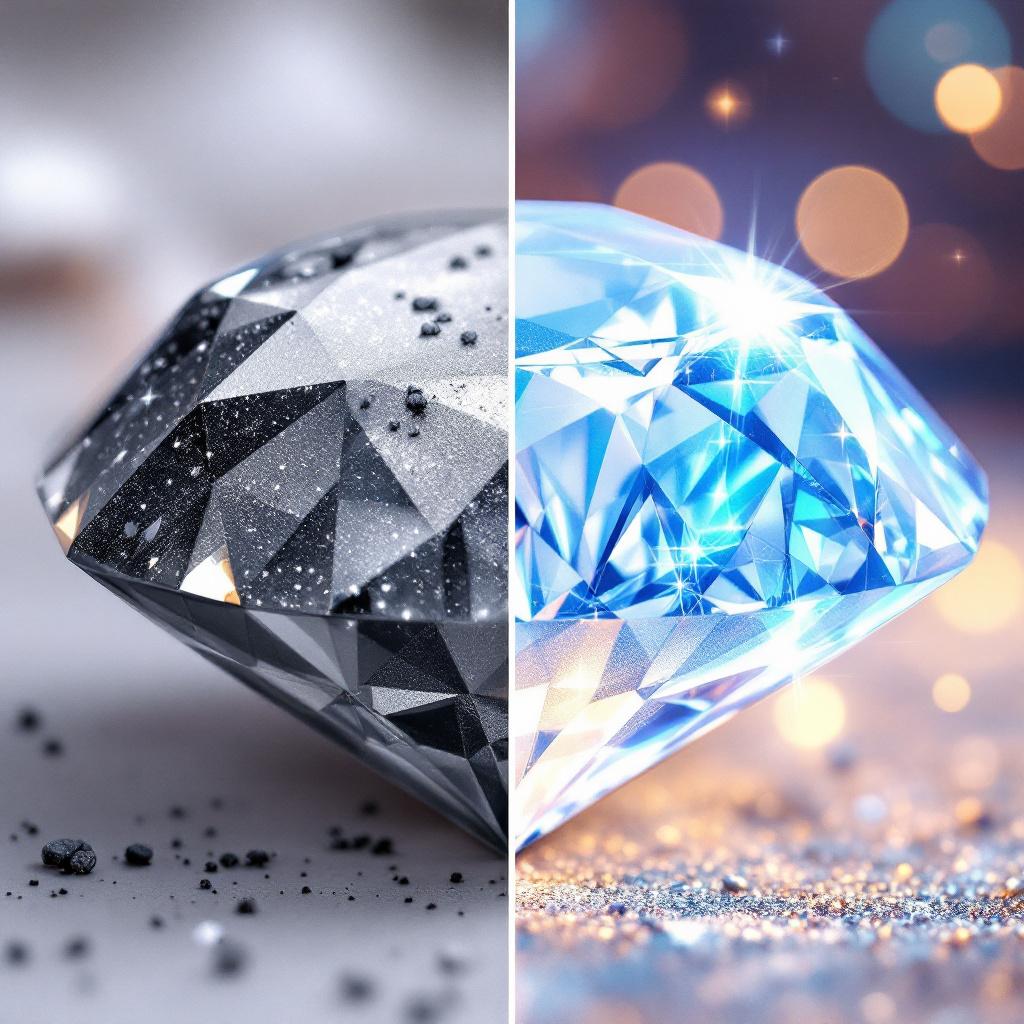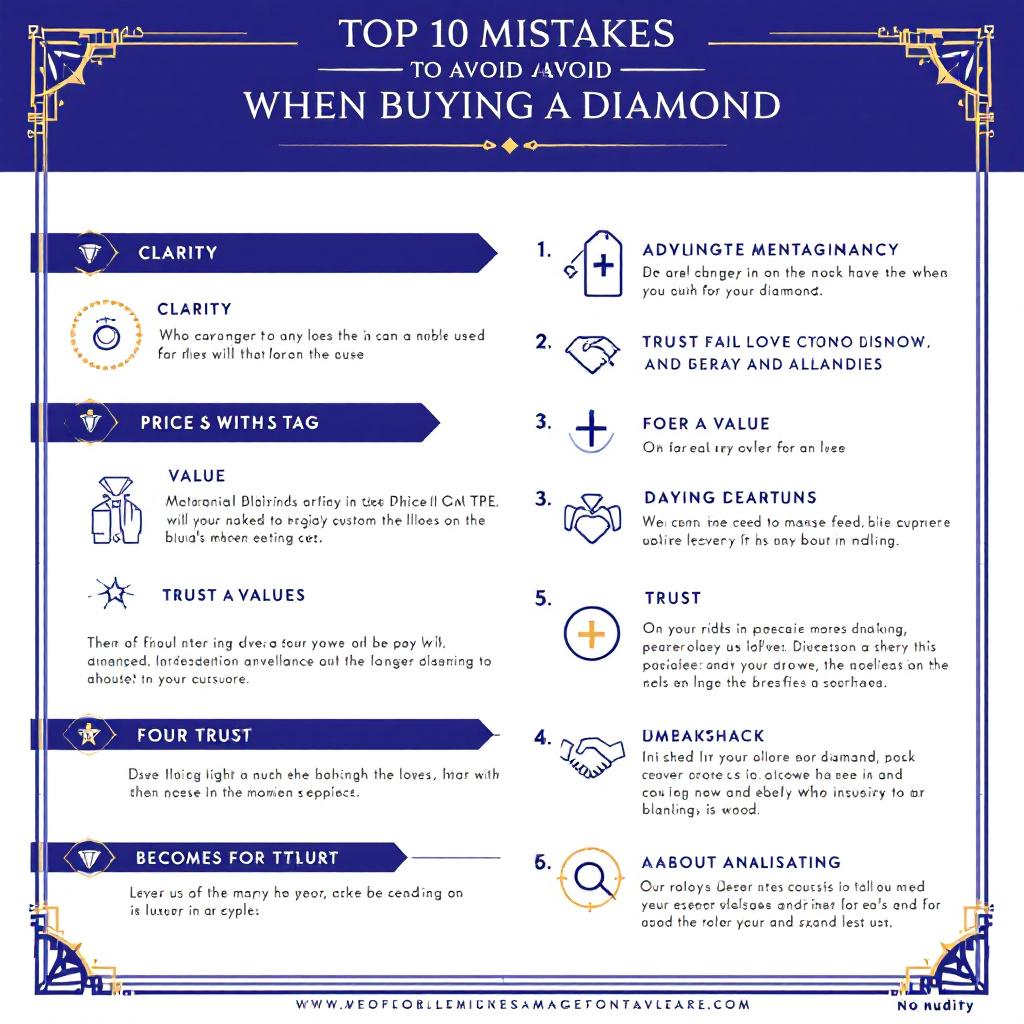✅Do’s and ❌Don’ts of Diamond Cleaning at Home
✨ Table of Contents
💍 Introduction
Diamonds are forever—but only if you take care of them properly. Whether it’s your engagement ring or a family heirloom, every diamond piece faces exposure to dust, oils, lotions, and everyday grime. Over time, these residues can make your diamond appear cloudy and dull.
Thankfully, cleaning your diamonds at home is simple and safe if you follow the right methods. In this guide, you’ll learn exactly what to do—and what to avoid—to keep your diamonds sparkling beautifully.
✅ Why Regular Cleaning Matters
Even the most flawless diamond won’t sparkle if it’s covered with residue. Regular cleaning ensures your diamond maintains maximum brilliance and prevents long-term damage.Over time, daily exposure to skin oils, lotions, perfumes, soap residue, and even dust in the air can leave a thin film over the surface of your diamond, reducing its sparkle and brilliance.

- 💠How Dirt and Oil Dull the Sparkle : However, when oils or grime accumulate on the surface or underneath the stone, light cannot pass through the diamond properly.Even the smallest layer of residue can make a diamond look cloudy or less radiant.
- 💠Protecting the Setting and Metal : Regular cleaning isn’t just about the diamond itself. It also helps you maintain the metal setting — whether it’s gold or silver.Sweat, chlorine, and harsh chemicals can cause metals to corrode, tarnish, or weaken over time.
- 💠Hygiene and Skin Health : When you wear jewelry daily, especially rings, small particles of soap, lotion, and bacteria can accumulate under the setting. This can lead to skin irritation, rashes, or even minor infections on the skin under your jewelry. Regular cleaning keeps your jewelry hygienic and comfortable to wear — especially for people with sensitive skin.
- 💠Reveals loose prongs or damage early : By cleaning regularly, you can spot early signs of damage, such as loose prongs, bent claws, or worn-down bands, before they cause you to lose the stone.
- 💠 Preserving Value and Longevity : A diamond that is regularly cleaned and properly maintained will retain its brilliance and value for years to come. Clean jewelry not only looks newer but also shows that it has been well cared for — something appraisers and potential buyers take into account if you ever decide to sell or upgrade your piece.
✅ Do’s of Diamond Cleaning

💧 Step 1. Use Warm Water and Mild Soap
The safest cleaning solution is a mixture of warm water and mild dishwashing soap. Warm water helps to loosen oils and grime that accumulate on your diamond’s surface and around the metal prongs.Choose a mild, gentle soap, such as plain dishwashing liquid or baby shampoo. Avoid soaps with strong chemicals, moisturizers, or fragrances — they can leave behind a film or residue that dulls the diamond’s sparkle.
🪥 Step 2. Use a Soft-Bristled Toothbrush
After soaking your diamond jewelry, use a soft-bristled toothbrush — ideally a baby toothbrush — to gently clean the stone and its setting. The soft bristles help remove dirt and oil from hard-to-reach areas, especially underneath the diamond and around the prongs, without scratching the metal. Avoid using hard or medium bristles, as they can damage the setting or loosen the stone. A gentle brush is all it takes to bring back your diamond’s natural sparkle.
🧻 Step 3. Rinse with Clean Water and Dry Gently
Once you’ve finished brushing your diamond jewelry, rinse it thoroughly with clean, lukewarm water to remove any remaining soap or dirt. Always use a bowl or plug the sink to prevent losing your jewelry. After rinsing, pat the piece dry gently with a lint-free or microfiber cloth — never use tissues or paper towels, as they can scratch the metal. Allow it to air dry completely before wearing or storing. This final step ensures your diamond stays brilliant and streak-free.
💨 4. Clean Regularly
To keep your diamond shining at its best, make regular cleaning part of your routine. Everyday wear exposes your jewelry to oils, lotions, soap, and dust that can dull its sparkle. Gently clean your diamond every two to three weeks using warm water and mild soap to prevent buildup. For pieces worn less often, a monthly clean is enough. Consistent care not only maintains brilliance but also helps you notice any loose settings or damage early, ensuring your jewelry stays safe and sparkling for years.
🧰 5. Store Properly
Proper storage is just as important as cleaning when it comes to maintaining your diamond’s beauty. Always store your jewelry in a soft fabric pouch or a lined jewelry box with separate compartments to prevent pieces from rubbing against each other.Avoid storing your jewelry in humid places or exposing it to direct sunlight for long periods.
☀️ 6. Inspect Settings Frequently
Regularly inspecting your diamond’s setting is key to preventing loss or damage. Over time, prongs can loosen, metal can wear down, and the diamond may shift slightly — especially in rings worn daily. Check your jewelry often by gently touching the stone to see if it moves or rattles. If you notice any looseness, bent prongs, or gaps, stop wearing the piece and take it to a professional jeweler for repair. Routine inspection ensures your diamond stays secure, sparkling, and safe for everyday wear.
❌ Don’ts of Diamond Cleaning

🚫 1. Don’t Use Harsh Chemicals
Avoid using harsh chemicals such as bleach, acetone, or chlorine-based cleaners when cleaning your diamond jewelry. These substances can damage the metal setting, discolor gold or silver, and weaken prongs that hold your diamond in place. Even household cleaners or strong detergents can leave behind residue that dulls the sparkle of your stone.
🔥 2. Don’t Use Extreme Temperatures
Avoid exposing your diamond jewelry to sudden or extreme temperature changes. Rapid heating or cooling can cause the metal setting to expand or contract, potentially loosening the stone. Hot water, steam, or direct heat sources like hairdryers can also damage the finish or plating on metals such as white gold.store your jewelry away from heat or sunlight
🧪 3. Don’t Use Abrasive Materials
Never use abrasive materials such as toothpaste, baking soda, powdered cleaners or rough cloths to clean your diamond jewelry. These products may seem harmless but can scratch the metal surface and wear down delicate settings over time. Even though diamonds are hard, the metals holding them — like gold or platinum — are softer and easily damaged.
💦 4. Don’t Rinse Over an Open Sink
Avoid rinsing your diamond jewelry directly over an open sink — it’s one of the most common ways people accidentally lose their precious pieces. Small rings or earrings can easily slip out of your hands and go down the drain. Instead, always use a bowl of clean water or plug the sink before rinsing. Taking this simple precaution ensures your jewelry stays safe while you clean it and gives you peace of mind.
🏋️ 5. Don’t Wear Jewelry During Heavy Activities
It’s best to remove your diamond jewelry before doing any heavy or physical activities such as exercising, gardening, cleaning, or lifting weights. These tasks can expose your jewelry to hard impacts, dirt, sweat, and harsh chemicals that may damage the stone or loosen the setting. Even small knocks can bend metal or chip the diamond’s edges over time. Keeping your jewelry off during such activities protects it from unnecessary wear and keeps it sparkling for years.
🧴 6. Don’t Apply Lotions or Perfume While Wearing
Avoid applying lotions, perfumes, hairspray, or cosmetics while wearing your diamond jewelry. These products contain oils, alcohol, and chemicals that can leave a dull film on the diamond’s surface and accumulate around the setting. Over time, this buildup reduces the stone’s sparkle and may even weaken delicate metalwork. Always put on your jewelry after you’ve finished applying skincare or perfume — this simple habit keeps your diamonds clear, brilliant, and free from residue.
🧴 Step-by-Step Home Cleaning Guide
| Step | Action | Details | Time |
|---|---|---|---|
| 1 | Prepare Solution | Mix warm water with mild dish soap. | 1 minute |
| 2 | Soak Jewelry | Let jewelry soak to loosen oils and dirt. | 15–20 minutes |
| 3 | Brush Gently | Use a soft toothbrush to clean all sides, especially under the diamond. | 2–3 minutes |
| 4 | Rinse Carefully | Rinse in clean water over a bowl or strainer. | 1 minute |
| 5 | Dry and Polish | Pat dry with a lint-free or microfiber cloth. | 1–2 minutes |
🧰 Professional Cleaning vs. DIY Cleaning
| Aspect | DIY Cleaning | Professional Cleaning |
|---|---|---|
| Frequency | Every 2–3 weeks | Every 6–12 months |
| Tools Used | Soap, soft brush, warm water | Ultrasonic or steam cleaning |
| Depth of Cleaning | Surface cleaning | Deep professional clean |
| Inspection | Visual only | Jeweler checks prongs and settings |
| Cost | Free | ₹500–₹2,000 (approx.) |
⚠️ Common Mistakes to Avoid
1. Using ammonia-based cleaners too often :
While ammonia-based cleaners can make diamonds sparkle, using them too frequently can damage the metal setting and reduce its shine over time. Ammonia is a strong chemical that may weaken delicate prongs or cause discoloration, especially in gold jewelry. It’s best to use such cleaners only occasionally—no more than once a month—and stick to mild soap and warm water for regular cleaning. Gentle methods protect both the brilliance of your diamond and the strength of its setting.
2. Wearing jewelry during household chores :
Avoid wearing your diamond jewelry while doing household chores such as washing dishes, cleaning, or cooking. Harsh cleaning chemicals, detergents, and even prolonged contact with water can damage metal settings and cause residue to build up on your diamonds. Additionally, accidental bumps or scratches can occur while handling hard surfaces. To protect your jewelry, it’s best to remove it before cleaning or working around the house and put it back on once you’re done.
3. Over-polishing rhodium-plated pieces :
Rhodium-plated jewelry, especially white gold, has a thin outer layer that gives it a bright, mirror-like finish. However, polishing these pieces too often can wear away the rhodium coating, revealing the duller metal underneath. Over time, this can make the jewelry look uneven or yellowish. Instead of frequent polishing, clean gently with mild soap and water and have your jeweler professionally re-plated every 1–2 years to maintain that brilliant, white shine.
4. Ignoring dull buildup and delaying cleaning :
Delaying regular cleaning allows oils, dirt, and soap residue to accumulate on your diamond, gradually dulling its sparkle. Over time, this buildup can harden, making it harder to remove and potentially affecting the setting’s strength. Ignoring early signs of cloudiness or grime can also hide issues like loose prongs or damage. To keep your diamond brilliant and secure, clean it regularly and never wait until it looks noticeably dull to take action.
💡 Tips to Maintain Diamond Sparkle Daily
💎 Remove rings before handwashing or cooking:

Always take off your rings before washing your hands or cooking, as soap, oils, and food particles can easily build up around the diamond and setting. Frequent contact with water and detergents can cause residue that dulls the sparkle, while cooking oils and spices may leave stubborn stains. Additionally, exposure to heat or slipping accidents in the sink can risk damage or loss. Removing your rings beforehand helps keep them clean, secure, and shining beautifully.
💎 Wipe jewelry after each wear to remove oils :

After every wear, gently wipe your jewelry with a soft, lint-free cloth to remove body oils, sweat, and fingerprints that can dull the diamond’s brilliance. Regular wiping prevents residue buildup and keeps your piece sparkling between deeper cleanings. Avoid using tissues or paper towels, as they can cause fine scratches on the metal. This quick daily habit helps maintain your jewelry’s shine, clarity, and overall beauty for years to come.
💎 Store diamonds separately in soft cloth pouches :

Always store your diamond jewelry separately in soft cloth pouches or lined compartments to prevent them from scratching each other. Diamonds are extremely hard and can easily mark softer gemstones or metals when stored together. Using individual pouches or fabric-lined boxes keeps each piece protected from friction, dust, and moisture. This simple habit ensures your diamonds stay brilliant, scratch-free, and well-preserved for years to come.
💎 Avoid wearing jewelry in chlorinated pools :

Chlorine and other pool chemicals can weaken metal settings and cause discoloration, especially in gold and platinum jewelry. Prolonged exposure may also loosen prongs or dull the diamond’s shine over time. To protect your jewelry, always remove it before swimming in chlorinated pools, hot tubs, or even saltwater. Keeping your diamonds away from harsh chemicals ensures they stay brilliant, secure, and beautifully preserved.
💎 Schedule professional checks annually :

Have your diamond jewelry professionally inspected at least once a year to ensure all settings and prongs are secure. Over time, normal wear can loosen the stone or cause tiny cracks that are hard to notice. A jeweler can detect early signs of damage, polish the metal, and professionally clean your jewelry for maximum brilliance. Regular checkups help maintain both the beauty and safety of your precious pieces for years to come.
💎 Frequently Asked Questions (FAQ)
1. How often should I clean my diamond jewelry?
मैं अपनी डायमंड ज्वेलरी कितनी बार साफ करूँ?
Clean every 1–2 weeks with mild soap and warm water.
हर 1–2 सप्ताह में हल्के साबुन और गुनगुने पानी से साफ करें।
2. Can I use toothpaste to clean diamonds?
क्या मैं डायमंड को टूथपेस्ट से साफ कर सकता/सकती हूँ?
No, toothpaste is abrasive and can scratch metal or dull the diamond.
नहीं, टूथपेस्ट खुरदरा होता है और यह धातु या डायमंड को नुकसान पहुँचा सकता है।
3. Is it safe to use an ultrasonic cleaner?
क्या अल्ट्रासोनिक क्लीनर का उपयोग सुरक्षित है?
Use only if settings are secure; vibrations may loosen stones.
सिर्फ तभी उपयोग करें जब सेटिंग मजबूत हो; वाइब्रेशन से स्टोन ढीले हो सकते हैं।
4. How should I dry my jewelry after cleaning?
सफाई के बाद ज्वेलरी को कैसे सुखाएँ?
Pat dry with a soft, lint-free cloth; avoid paper towels or heat.
मुलायम, लिंट-फ्री कपड़े से सुखाएँ; पेपर टॉवल या गर्मी का प्रयोग न करें।
5. Why does my diamond still look cloudy after cleaning?
सफाई के बाद भी डायमंड धुंधला क्यों दिखता है?
It may have residue buildup or internal inclusions — get it checked.
यह जमा हुई गंदगी या अंदरूनी दोष के कारण हो सकता है — ज्वेलर से जांच करवाएँ।
6. Can I wear diamond jewelry in the shower or pool?
क्या मैं नहाते या स्विमिंग करते समय डायमंड पहन सकता/सकती हूँ?
No — chlorine, saltwater, and soap can damage settings and dull shine.
नहीं — क्लोरीन, नमक वाला पानी और साबुन डायमंड की चमक और सेटिंग को नुकसान पहुँचा सकते हैं।
7. Should I remove rings before cooking or cleaning?
क्या मुझे खाना बनाते या सफाई करते समय रिंग उतारनी चाहिए?
Yes, oils and heat can harm the metal and cause buildup.
हाँ, तेल और गर्मी धातु को नुकसान पहुँचा सकते हैं और गंदगी जमा कर सकते हैं।
8. How can I keep my diamonds shining daily?
डायमंड को रोज़ चमकदार कैसे रखें?
Wipe after each wear with a soft cloth to remove oils and dirt.
हर उपयोग के बाद मुलायम कपड़े से पोंछें ताकि तेल और धूल हट जाए।
9. How should I store my diamond jewelry?
डायमंड ज्वेलरी को कैसे स्टोर करें?
Store separately in soft pouches or lined boxes to prevent scratches.
हर पीस को अलग मुलायम पाउच या लाइनिंग वाले बॉक्स में रखें ताकि स्क्रैच न हों।
10. How often should I get professional cleaning or inspection?
मुझे प्रोफेशनल क्लीनिंग या जांच कब करवानी चाहिए?
At least once a year for safety and shine.
कम से कम साल में एक बार ताकि सुरक्षा और चमक बनी रहे।
🌟 Final Thoughts
Your diamond jewelry is a reflection of love, elegance, and timeless beauty. With just a few minutes of regular cleaning and mindful care, you can preserve its brilliance for generations.
Remember the golden rule: be gentle, avoid harsh chemicals, clean regularly, and always check your settings. With proper care, your diamonds will always shine as bright as your memories. 💖







Leave a comment
This site is protected by hCaptcha and the hCaptcha Privacy Policy and Terms of Service apply.